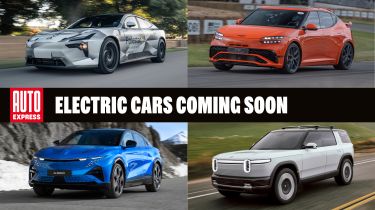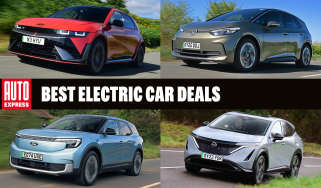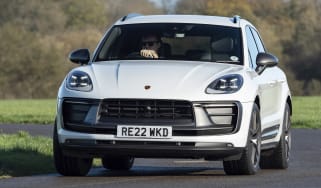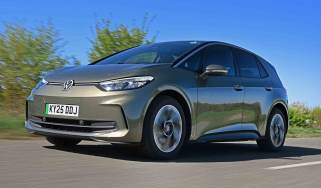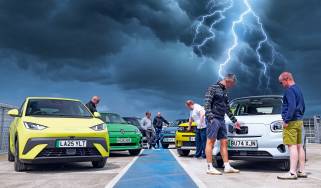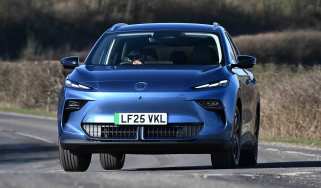New electric cars coming soon: the fresh EVs of 2025 and beyond
The EV market is growing faster than ever, and these are the incoming cars to keep an eye on
Turn the clock back to 2010 and there was just a handful of electric cars on the market. But today there seems to be a brand-new EV being unveiled every other day.
Yet it’s not the sheer amount of EVs being launched that’s impressive, or the numbers sold these days (they made up nearly 20 per cent of all new-car sales in the UK in 2024). It’s the diversity of models, the level of affordability and the fact that nearly every mainstream brand makes at least one electric car.
With such a vast range of models on the horizon, we decided to thin the herd and highlight what we think are the 10 most exciting electric cars you need to know about.
Alpine A390
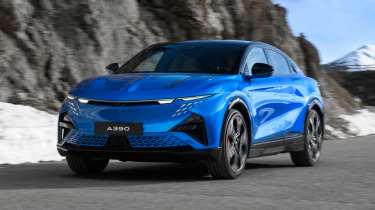
The phenomenal Alpine A110 going electric next year is a huge deal, but more pressing than that is the arrival of the all-new Alpine A390. This is arguably a more important moment for the performance brand, too, because the athletic ‘Sport Fastback’ will offer the first evidence of whether this 70-year-old sports car maker can remain true to its core principles of agility and lightness, and thrill drivers, as it tries to expand its customer base with much bigger models.
To instil a feeling of agility and lightness in a 2.1-tonne SUV, Alpine has fitted a bespoke triple-motor powertrain that delivers up to 464bhp and 808Nm of torque – so 0-62mph takes 3.9 seconds. But by managing each motor’s output precisely, the set-up offers torque vectoring to allow the car to pivot around curves and feel lighter.
BMW iX3
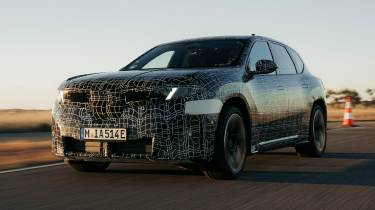
We are tantalisingly close to the start of a new era for BMW design and tech as part of the ‘Neue Klasse’ movement, with around 40 new and updated models set to be launched by the end of 2027. The first to arrive will be the next-generation BMW iX3 that’s due to be unveiled at the Munich Motor Show in September.
It will be the first BMW to feature the new Panoramic iDrive system, which stretches across the width of the dash. There’s a brand-new scalable platform with an 800V electrical architecture, more efficient and lighter e-motors, plus a lighter yet more energy-dense battery design.
Ferrari Elettrica

If there’s one brand that you’d think would hold off making an electric car until the day petrol was outlawed, it’s Ferrari. Yet development is well under way on the company’s first EV. Details are still thin on the ground at the moment, but it might actually be called the Ferrari Elettrica (Ferrari Electric).
It’s believed to feature virtual-gearbox tech and a choice of “historical, modern or futuristic, adrenaline-filled, relaxed” soundtracks to offer a more engaging driver experience, similar to what Hyundai has done with the Ioniq 5 N. Based on photos of prototypes, we believe the Elettrica is a four-door, lower-slung alternative to Ferrari’s Purosangue SUV.
Hyundai Ioniq 6 N
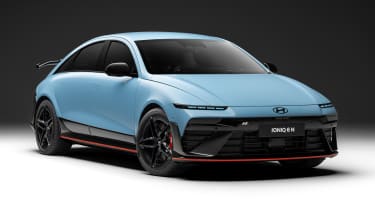
The Hyundai Ioniq 5 N is a tech marvel, and one of the most engaging EVs that we’ve driven. But the new Ioniq 6 N could be even better, and it’ll need to be, because it’s going up against the legendary BMW M3.
The ultra-streamlined saloon’s chassis has been thoroughly re-engineered, and its suspension geometry redesigned with adaptive dampers. Its dual-motor powertrain produces 641bhp – roughly 100bhp more than the latest M3 CS – and with the N Launch Control function activated, 0-62mph is dispatched in only 3.2 seconds.
Nissan Leaf
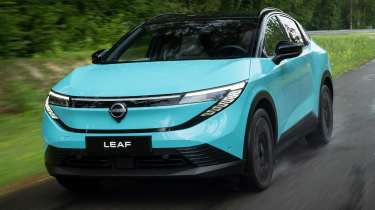
The Nissan Leaf may have led the charge for mainstream EVs, but the pioneer fell by the wayside after the arrival of more advanced and affordable rivals. Enter the Mk3 Leaf, which sees the humble family hatchback transformed into a sleek coupé-SUV that is guaranteed to turn more heads than either of its predecessors.
Entry-level models will offer 270 miles of range from a 52kWh battery, while those fitted with the larger 75kWh pack can cover up to 375 miles on a single charge. Nissan is also keen to point out that the swooping shape doesn’t come at the expense of practicality.
Latest Nissan deals
Peugeot E-208 GTi
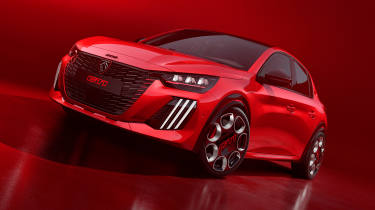
Renault isn’t the only French firm that has returned to its roots, because Peugeot is finally getting back into the hot hatchback game after a five-year hiatus. Not only that, it has revived the hallowed GTi badge.
The new Peugeot E-208 GTi is front-wheel drive only, using an e-motor that spits out 276bhp and 345Nm of torque – more than twice as much as the original 205 GTi had, and enough for 0-62mph in 5.7 seconds.
The Alpine A290 – based on the Renault 5 EV – delivers similar amounts of power, but what it doesn’t have is a mechanical limited-slip differential that will help the E-208 GTi get its power to the road and boost cornering ability. The steering is also supposed to be more responsive than the set-up on the regular version of Peugeot’s supermini, plus there’s a new “unique onboard immersive sound experience”, stiffer sport suspension, a revised rear anti-roll bar and larger front brakes with four-piston calipers.
Polestar 5
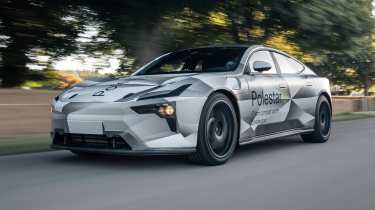
Five years ago, we laid eyes on the striking yet elegant Polestar Precept concept, which previewed a future flagship GT that could compete with cars such as the Porsche Taycan and Lotus Emeya. The all-new Polestar 5 will be that very car, and it’s been developed right here in the UK.
Behind those distinctive headlights and the sculpted bodywork is a bespoke bonded-aluminium chassis that reduces weight while increasing torsional stiffness. Elsewhere, dual motors will put out 874bhp and 900Nm of torque. The 5 will only seat four people, but its dramatic design with no rear window should provide as much space as possible for rear-seat passengers to enjoy.
Porsche Boxster

Most driving enthusiasts (including us here at Auto Express) still haven’t come around to the idea of a petrol-less sports car, but if there’s one company that might be able to convince us otherwise, it’s Porsche.
The Porsche Taycan and Macan Electric are among the best-handling EVs around, plus the fully electric Boxster and Cayman due to be unveiled this year will use a bespoke platform featuring a mid-mounted battery design. This aims to get as close as possible to the weight distribution and centre of gravity of a mid-engined sports car, while also maximising range and minimising weight. By not having the batteries under the floor, the driving position should be lower, too.
Range Rover Electric

The Range Rover has been the king of the hill, jungle and basically any challenge that has dared stand in its way over the past 55 years, and none of that will change with the arrival of the first-ever electric version, which rather unimaginatively, has been christened the Range Rover Electric.
Despite a colossal 118kWh battery that will provide more than 300 miles of range, and two e-motors producing 542bhp and 850Nm of torque, we’re told the weight isn’t excessively more than any other versions of the luxury SUV. Plus JLR’s engineers have preserved its off-road capabilities, while also making it utterly silent for the most refined driving experience possible. Sadly, the car isn’t due to arrive until 2026, but that certainly hasn’t stopped more than 64,000 people joining the wait list for it.
Volkswagen ID.2
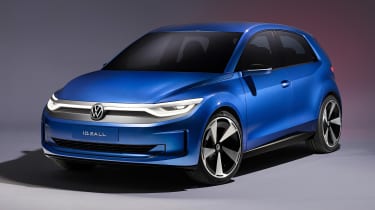
It’s hard to overstate the significance of the Volkswagen ID.2, which is due to make its world debut at September’s Munich Motor Show. The supermini EV will mark the start of a new era of VW design, both inside and out, with its friendly, much more familiar styling, which was previewed by the ID.2all concept in 2023. The brand is also promising big improvements in interior quality, and physical buttons are to make a proper comeback following feedback from customers and the Auto Express team.
VW promised in 2019 that it would deliver genuinely affordable EVs, and now the ID.2 (expected to cost from about £20k) is finally arriving, with the closely related sportier Cupra Raval supermini, Skoda Epiq and VW ID.2X small SUVs to follow.
There are plenty of great EVs already on sale, too, and our Find a Car service has 1,000s of great value cars available right now. Find your new car…

